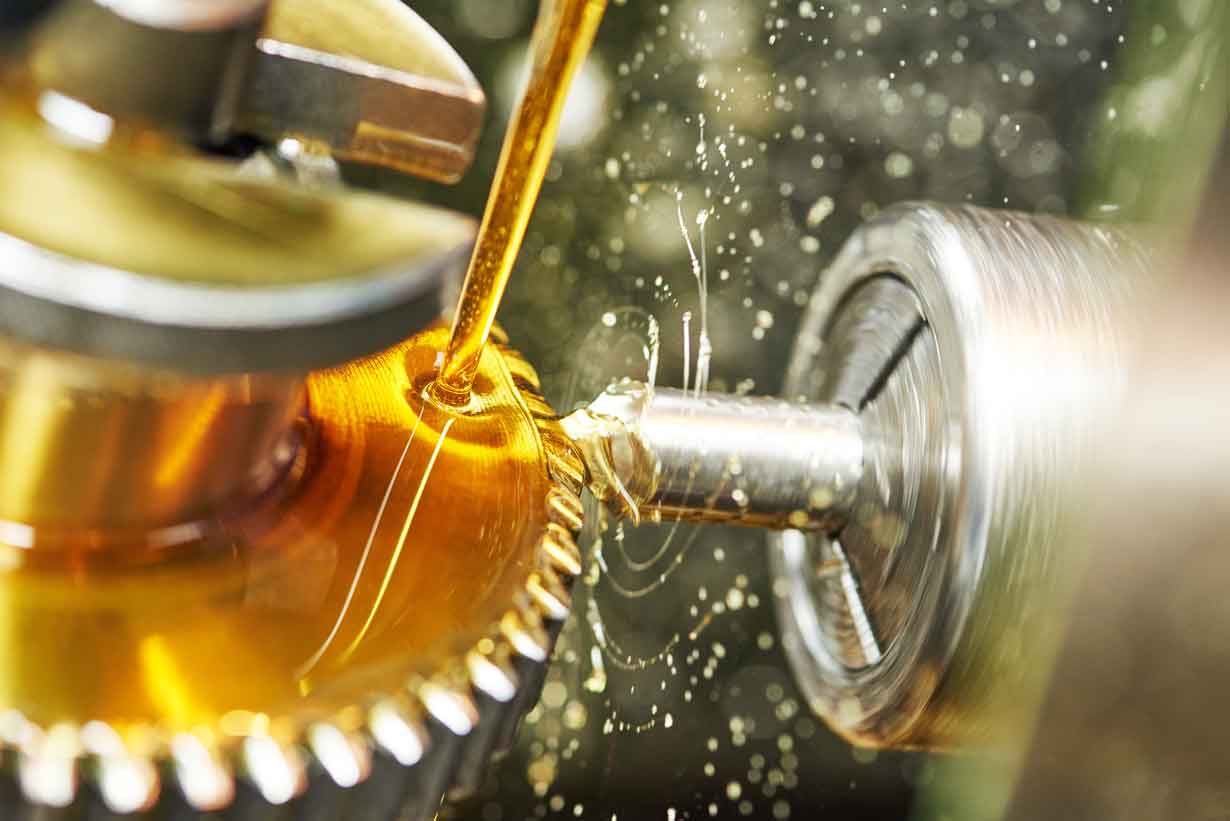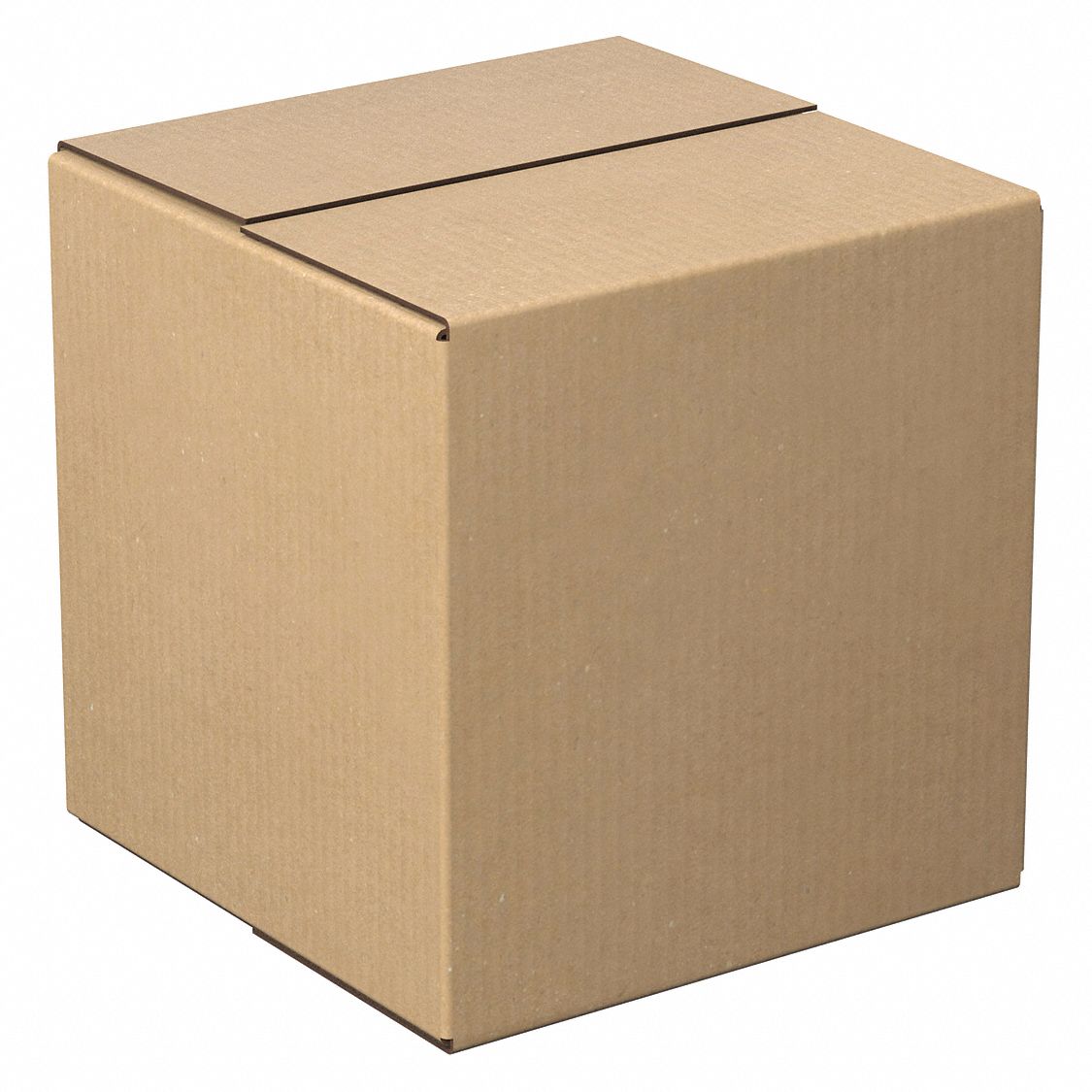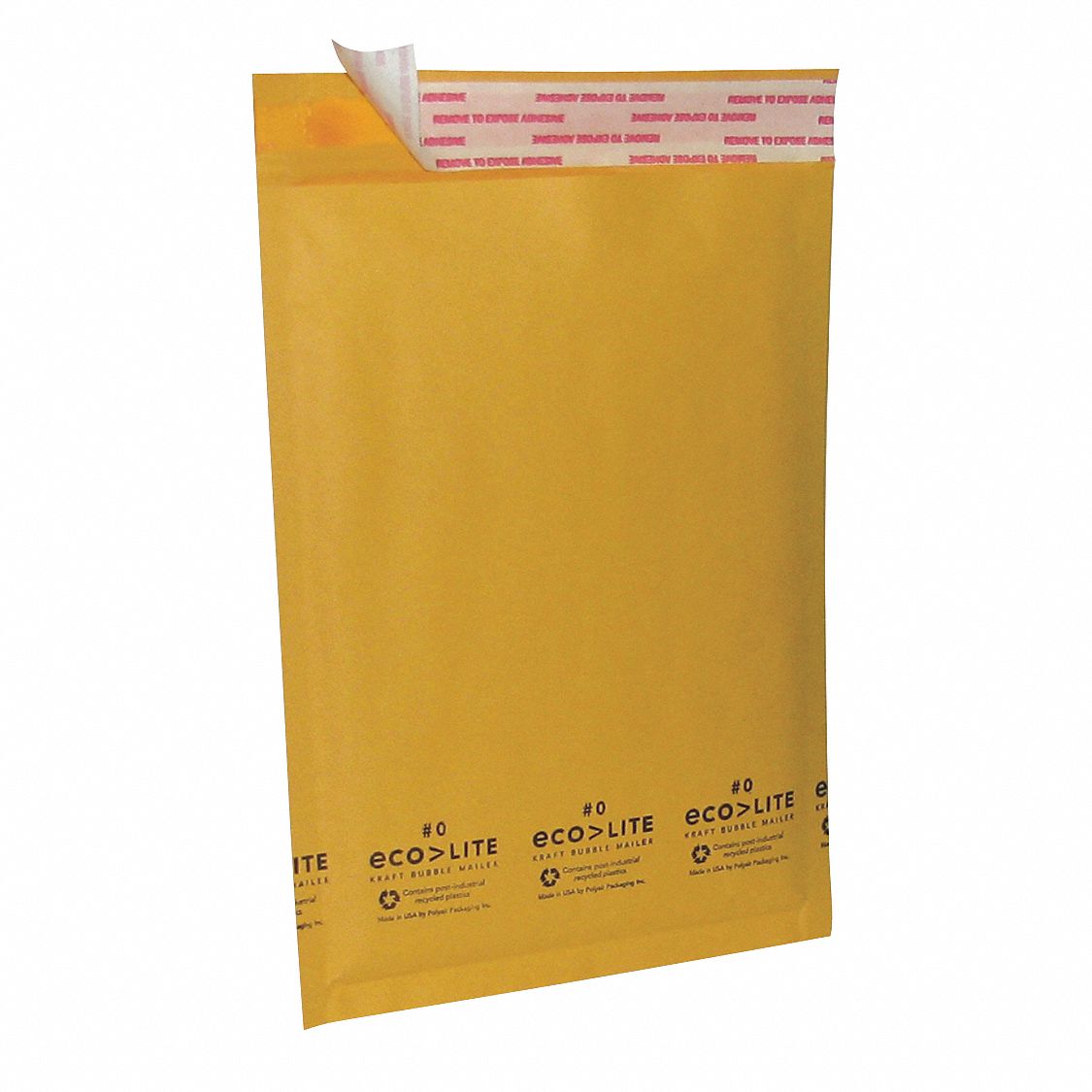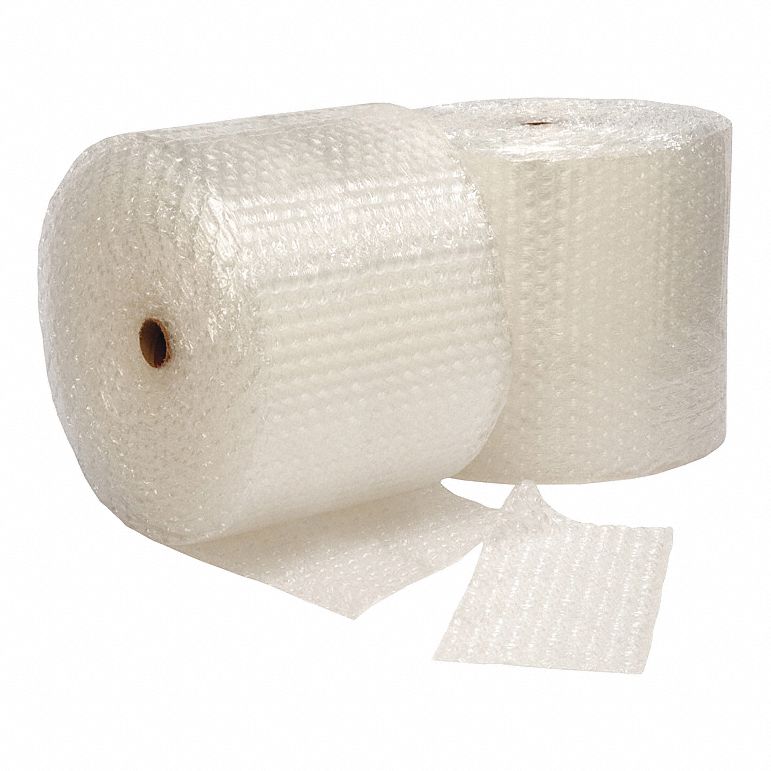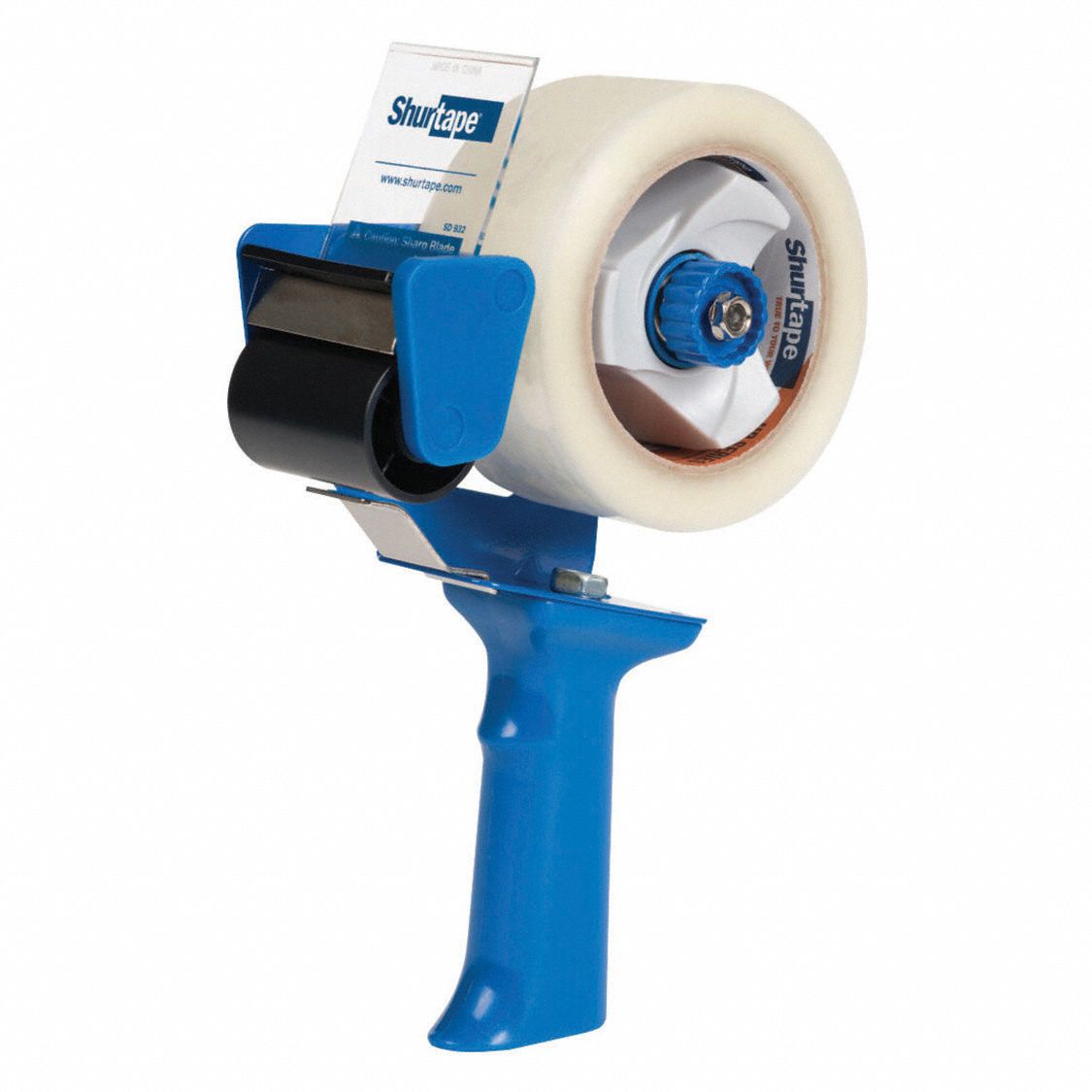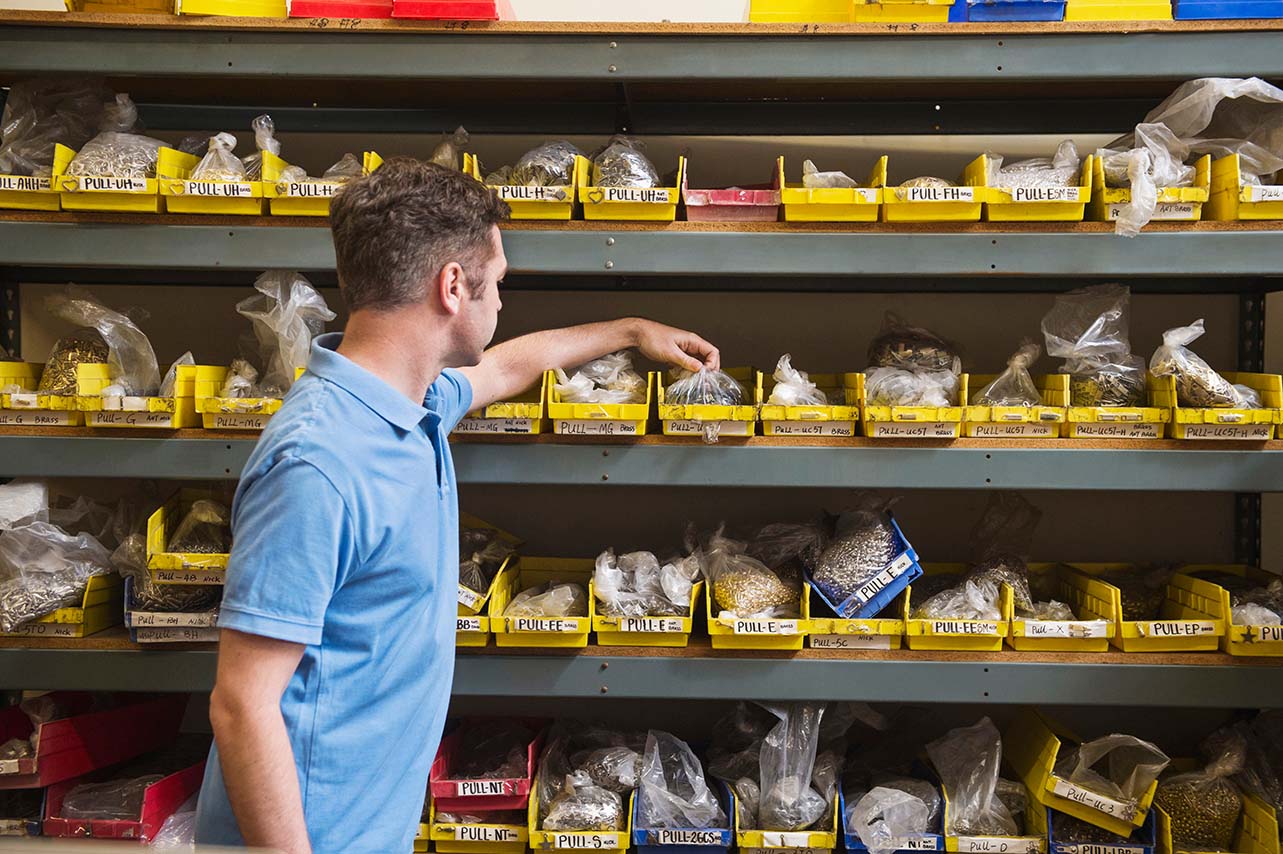

Storage Container Guide: Bins, Totes, Bulk Containers and Boxes
By Grainger Editorial Staff 11/14/22


Time spent hunting for parts is time wasted. A good storage system helps everyone make the most of the workday. Whether you're trying to place parts within easy reach of workstations or you want to ensure that pickers can breeze through their warehouse orders, there are many storage options to consider.
To decide what's best for your situation, you can evaluate your choices using a few basic questions about organizability, accessibility, mobility and capacity.
- Organizability: Does it let you separate stuff by size, type or kind, making it easier to find the exact things you need?
- Accessibility: Can you retrieve the stuff you need quickly, without too much rearranging, digging or time-consuming opening and closing?
- Mobility: Can you use it to move stuff from one place to another?
- Capacity: Does it have room for the amount of stuff you need to store? Does it have room for the size of stuff you need to store?
Thinking about these characteristics and the tradeoffs between them makes it easier to weigh the strengths and weaknesses of options like bins, totes, bulk containers and compartmented boxes.
Bins for Easy Access
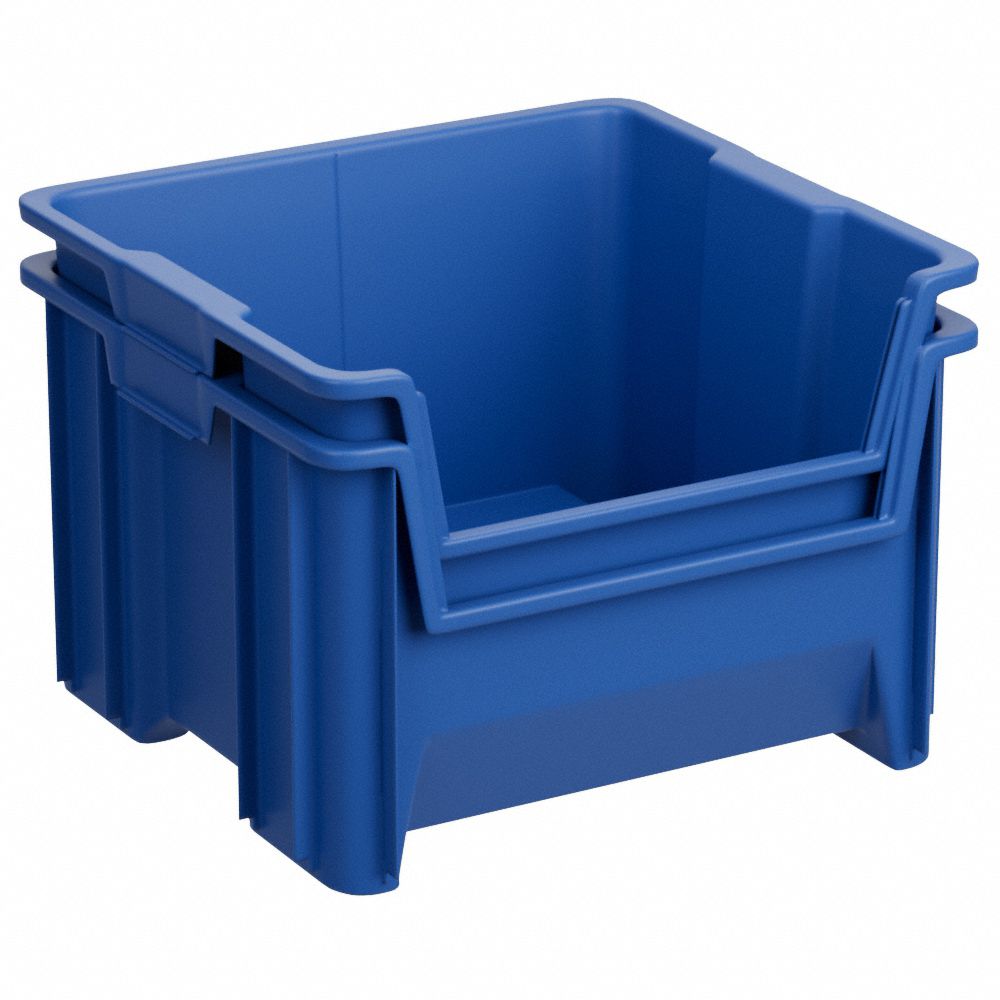

Open-topped storage bins can keep frequently used parts within reach of a workstation or easily available to fulfillment-center pickers.
Using a color-coding system can help you find what you need faster. For example, you might use black bins for HVAC equipment, gray bins for fasteners and so on.
Clear bins are also available. This option is becoming increasingly popular because makes it easy to see what's stored inside the bin, speeding up the retrieval process. Clear bins can also be combined with colored signs or labels to maintain
Hanging and stacking bins can hang from rails or stack on top of each other.
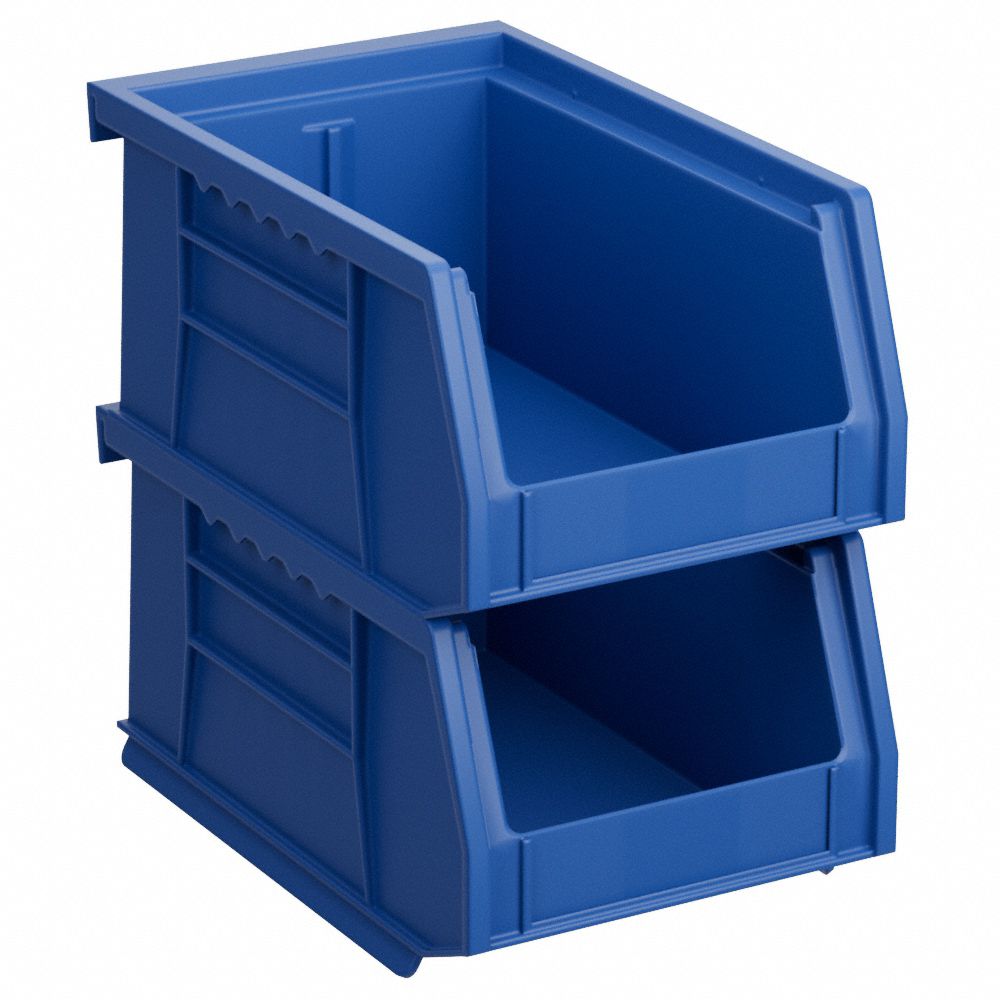

Shelf bins are designed for shelving and pick rack systems.
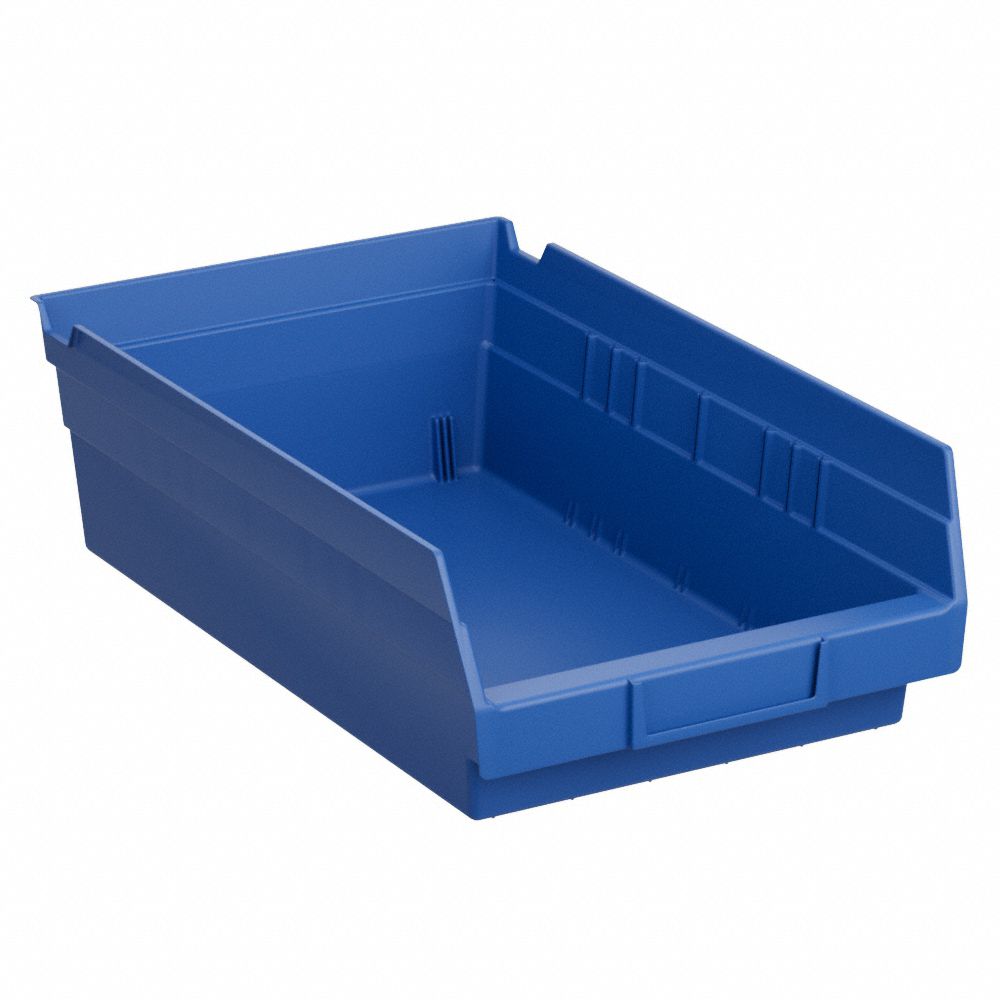

Rolling giant hopper bins can store bigger, heavier items and move them from place to place.
If you’re using a lot of bins you can keep them on specialized shelving, which can be stationary or mounted on casters for maneuverability inside the shop. Bin shelves are popular at warehouses and fulfillment centers because they allow workers to pick parts at a glance, without needing to open a container or pull boxes off the shelf.
The bottom line: Bins are great for organization when you've got a lot of small pieces and parts. And it's quick and easy to access what's inside them, especially with a color-coding system that reduces finding time.
Totes and Trunks for Mobility
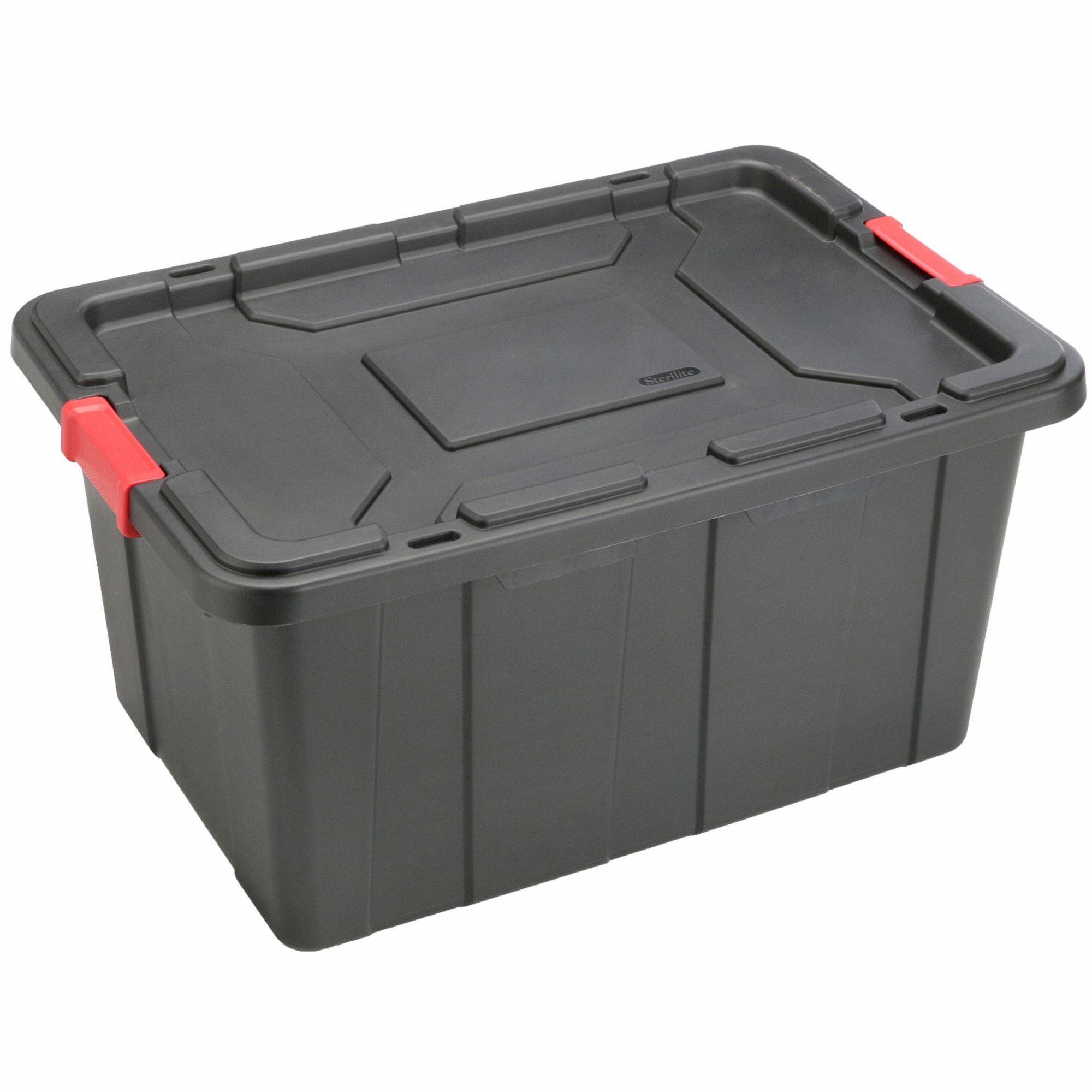

If you're moving parts around the shop or an outdoor jobsite, totes, boxes, and trunks are perfect. Totes and trunks have secure lids to prevent spilling, and most models have built-in handles. Totes come with snap-on, latching or attached lids, and the largest totes have capacities above 100 gallons. Trunks are heftier than totes, with reinforced walls and heavy-duty latching lids for protection against the elements.
The bottom line: Totes and trunks are extremely mobile, and they have the capacity to hold larger items than bins. It can also be more time-consuming to access the items inside, especially if they're stored on shelving, and they generally don't allow you to organize their contents.
Bulk Containers for Big Capacity
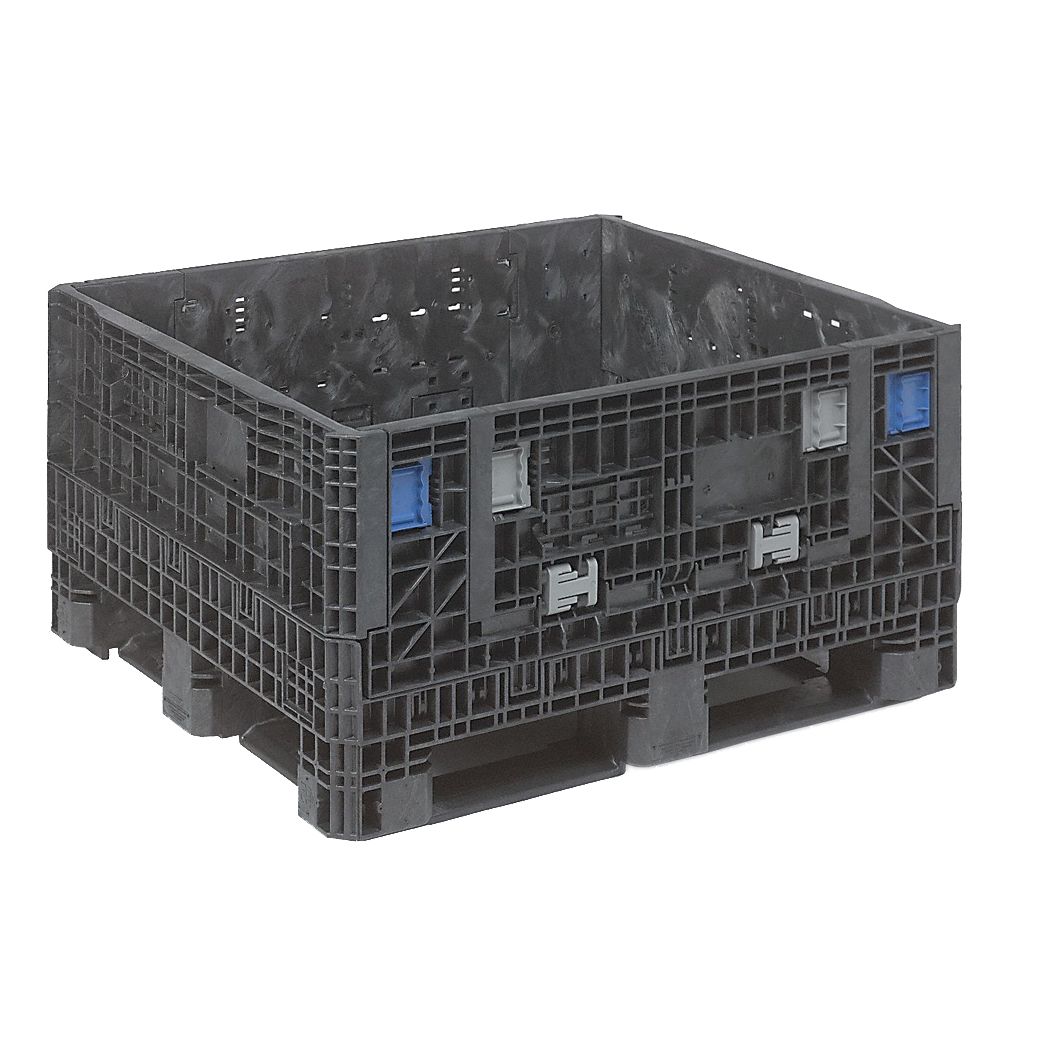

Bulk bins are large hoppers that hold up to 39 cubic feet of cargo. Since they can weigh thousands of pounds fully loaded, they're designed to allow for forklift transport, though some are mounted on casters. Some bulk containers have a drop door, which is a hinged wall that folds down for easy loading and locks securely in place during transport. Bulk bins are made of plastic, wire mesh and solid steel. They may be collapsible, insulated, or food-grade, and many have caster wheels that allow them to be rolled into place by hand.
The bottom line: Bulk containers have the most capacity, they load quickly and they can make big loads extremely mobile because they're designed to roll or be moved with forklifts or pallet stackers. They don't allow much organization, though you can fill them with smaller, organized containers. It can be more time consuming to access things inside them because of their size and depth.
Compartmented Boxes for Organization and Portability
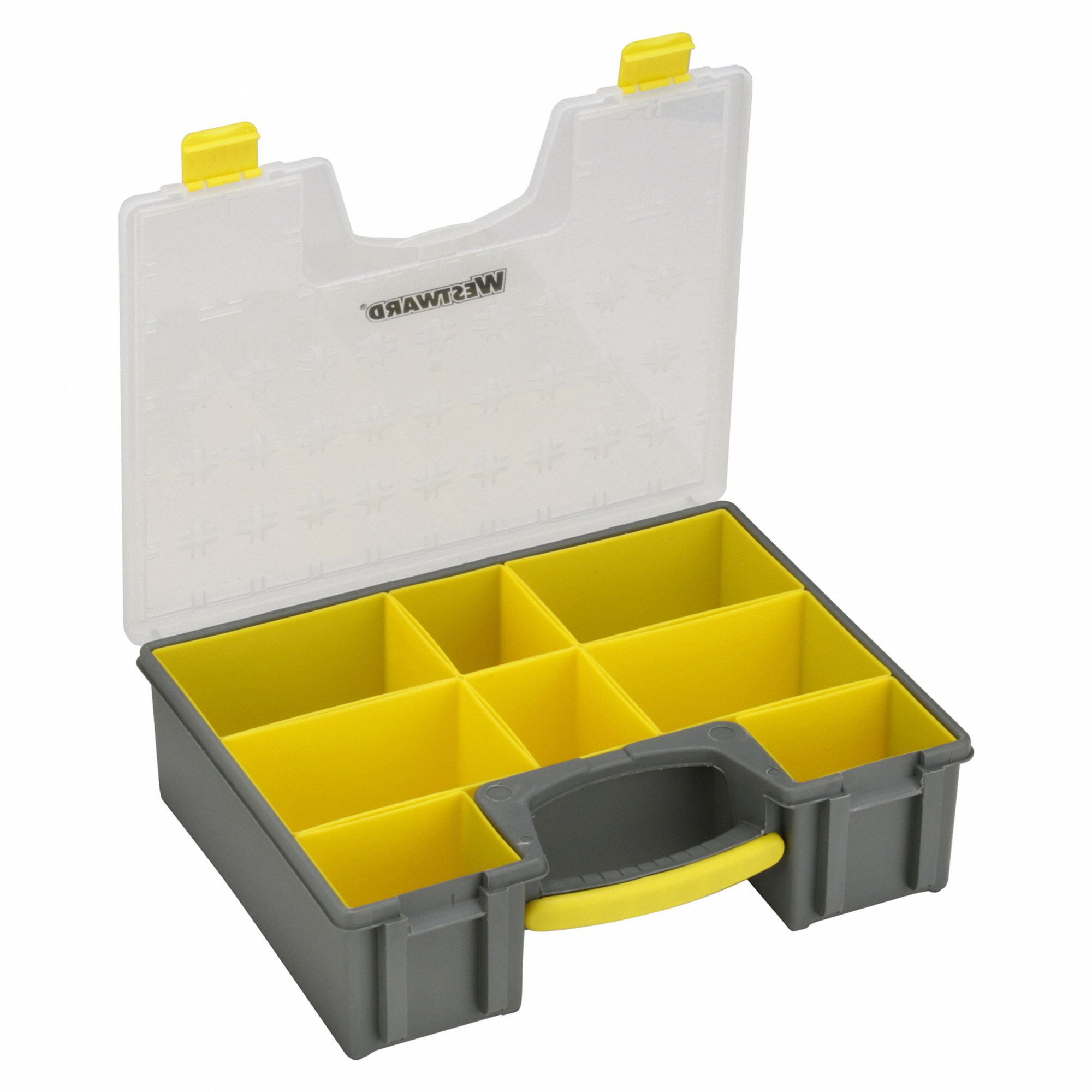

Designed to organize a lot of relatively small stuff, compartmented boxes are ideal for keeping track of related pieces, like electrical fittings or nuts and bolts. Some compartmented boxes have adjustable partitions or removable cups that allow for adjustable organization, while others have drawers that are divided into segments. Compartmented boxes can also be stored together in frames, creating an array of small spaces for small parts. And when their lids are closed, these boxes are easy to move from place to place.
The bottom line: Compartmented boxes have the potential for extreme organization and portability, but their capacity is comparatively low.
Divider Boxes and Straight-Wall Containers for Special Applications
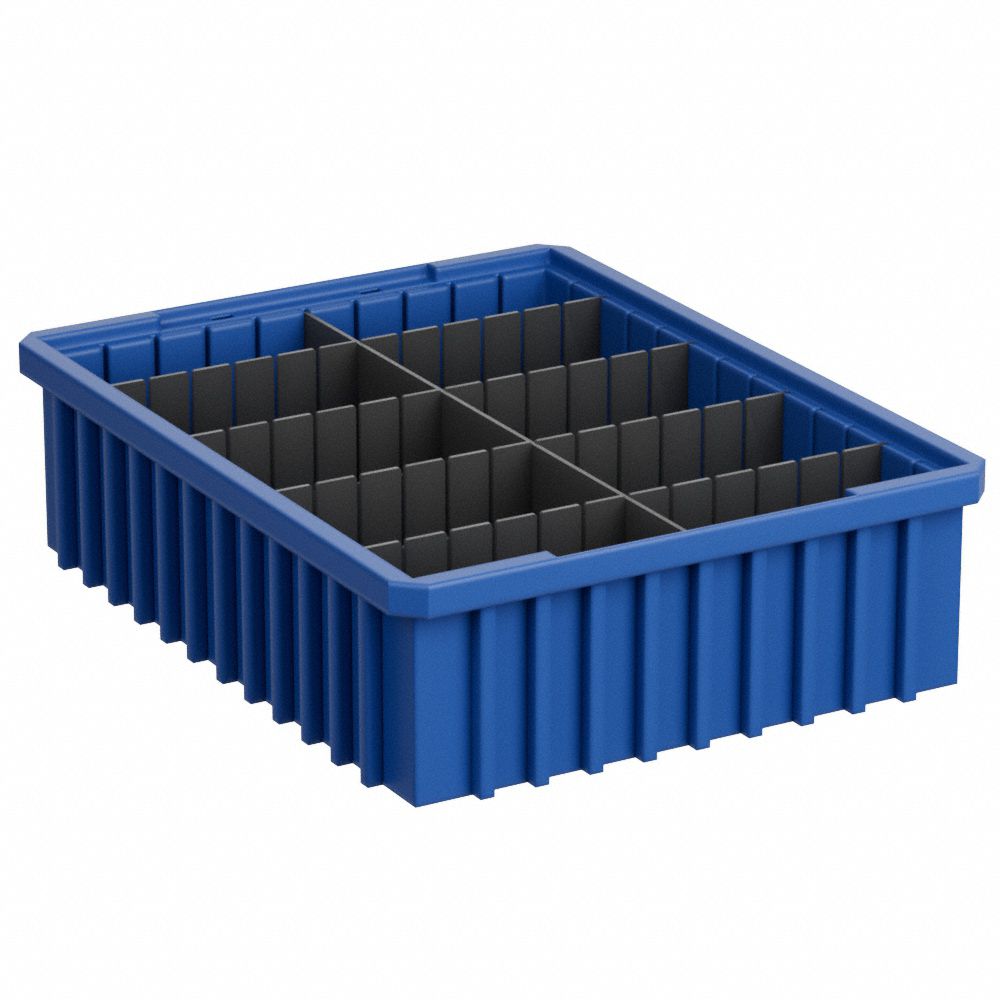

A divider box is a wide, shallow bin with grooves in the bottom that are designed to hold an adjustable grid of divider slots. The largest divider boxes can store 50 lbs of stuff or more and can be configured into grids with more than 100 compartments. Divider boxes are easy to access and can be stacked or arranged on bin shelving. They can be fitted with lids for dust-proof storage and easy handling.
The same box could be configured into a bin with a single lengthwise partition for dividing two larger items, or a bin divided into a grid of small compartments holding a variety of parts.
The Bottom Line: Divider boxes offer flexible organization for sorting items or storing work in progress. They combine the uniformity and accessibility of bins with the organizing compartments of a customized grid.
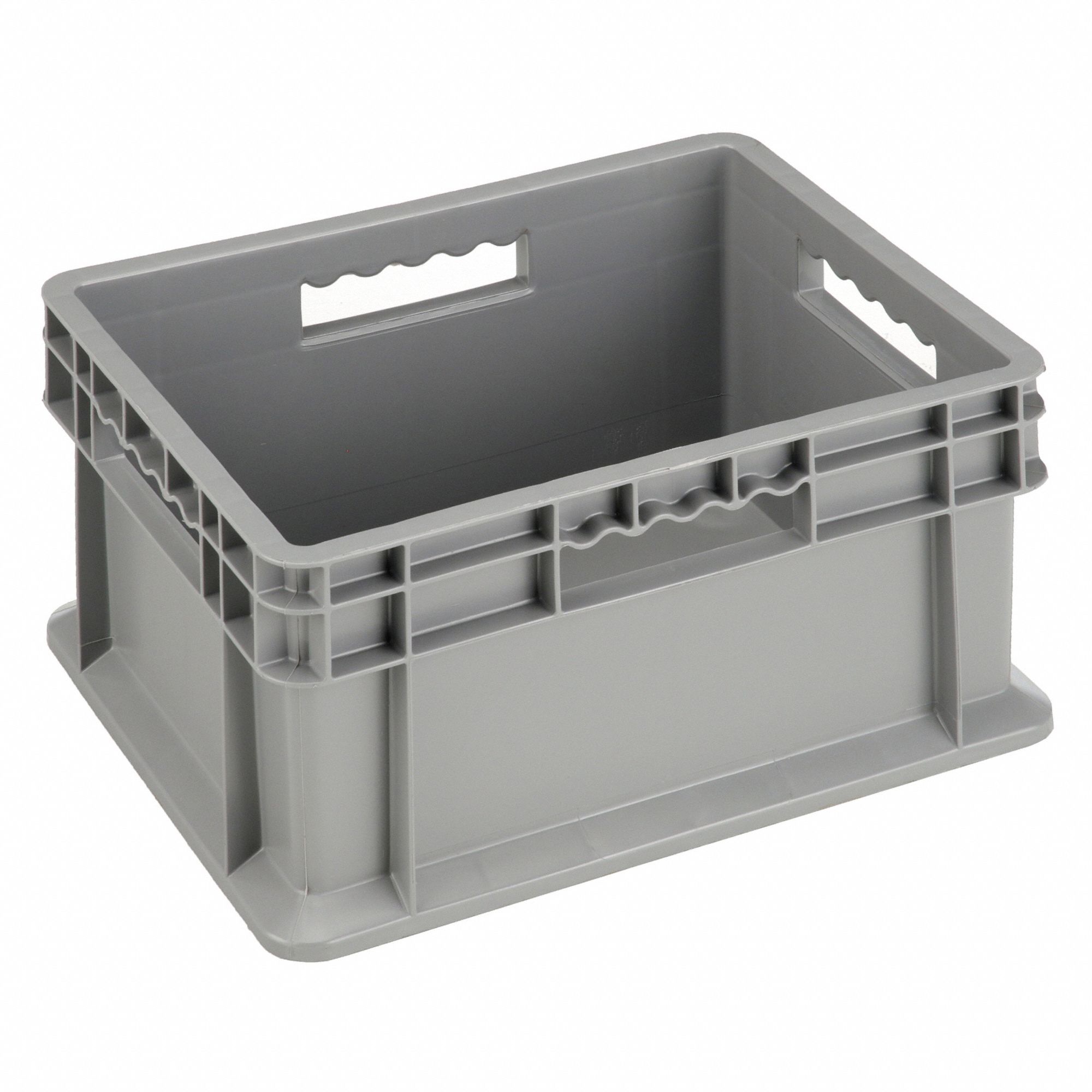

A straight-wall container can be filled with square or rectangular items without wasting any space around the container’s walls. These deep bins have vertical walls for storing square items and stacking securely. And their sturdy walls are designed to be stacked securely for transportation. They can be loaded onto a pallet with their walls touching, which is space-efficient and stable for shipping.
Straight wall containers come with either solid or vented walls. Solid walls offer superior protection from the elements, while vented walls are often used for items like bottles or food products that can collect condensation.
The Bottom Line: If you're loading products onto a pallet for shipping, straight-wall containers offer a highly efficient use of space. They can also be stacked into a solid block, protecting them from tipping over in transit.
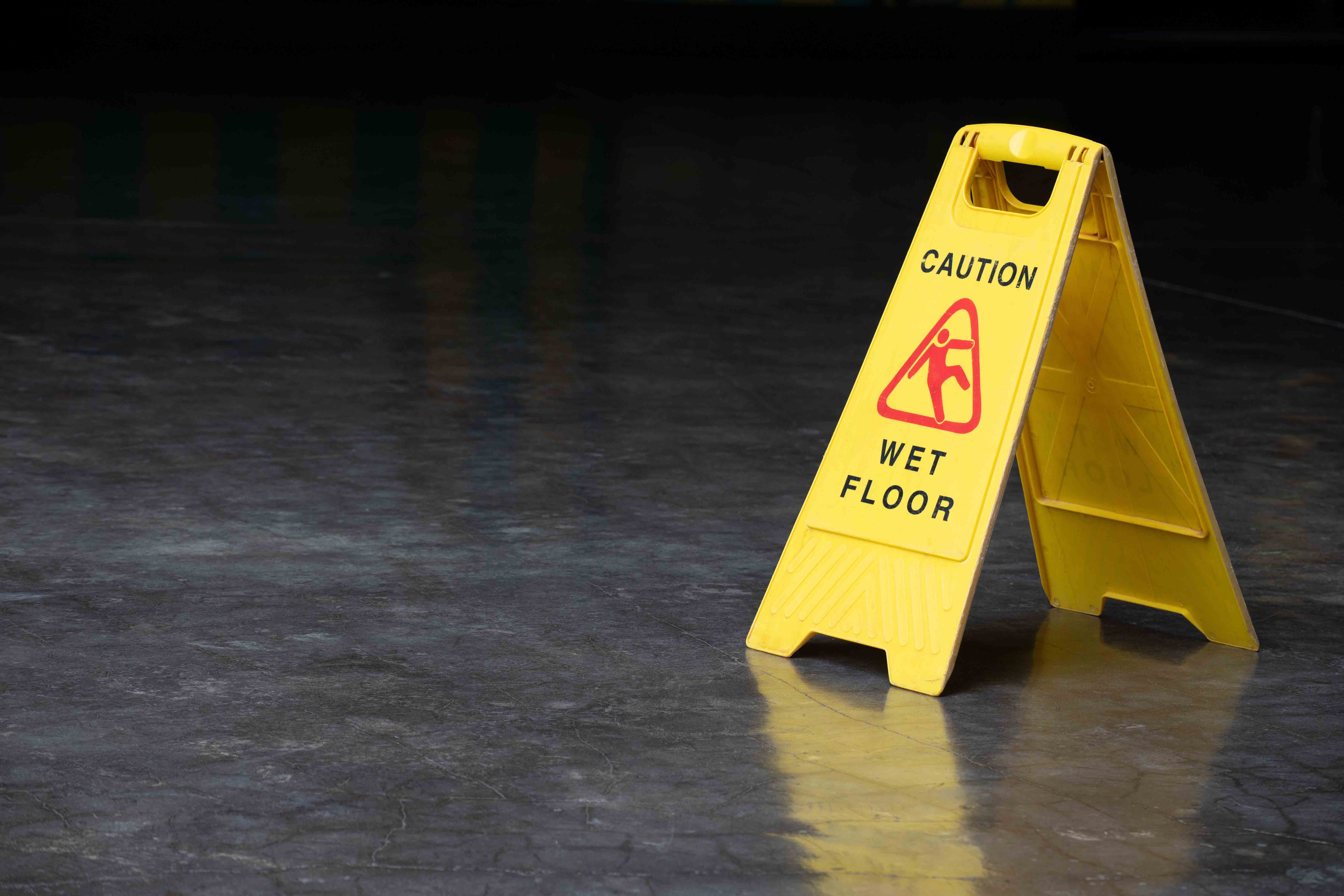
Safety Management
6 Tips to Help Prevent Slips, Trips and Falls
Identify the fall hazards in your workplace and implement a fall safety program. Check out these tips from Grainger so you can mitigate risk.
![]() Our Latest KnowHow
Our Latest KnowHow

OSHA Top 10 Violations: 2025
OSHA's annual list of most-cited standards offers valuable guidance on where companies might focus their safety compliance efforts.
The information contained in this article is intended for general information purposes only and is based on information available as of the initial date of publication. No representation is made that the information or references are complete or remain current. This article is not a substitute for review of current applicable government regulations, industry standards, or other standards specific to your business and/or activities and should not be construed as legal advice or opinion. Readers with specific questions should refer to the applicable standards or consult with an attorney.


